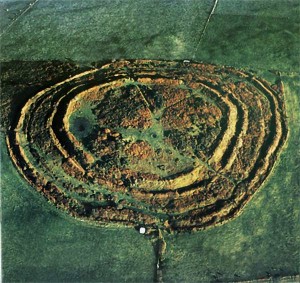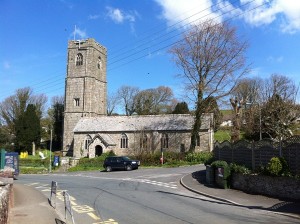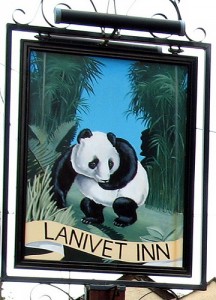Later this week, the Past in its Place project (http://pastplace.exeter.ac.uk/), will be visiting is Cornwall; making trips to Bodmin Moor and Castle-an-Dinas, a large Iron Age hillfort close to St Columb Major. This hillfort is actually very close to the new section of the A30 dual carriageway between Victoria and Indian Queens, though it does not appear at all remarkable when viewed from the road.
Although all the guidebooks, official websites and archaeological surveys talk about Castle-an-Dinas (loosely) as a ‘hillfort’ from the ‘Later Bronze Age and used through the Iron Age’, this ‘time-tagging’ tends to gloss over the longer-term life history of the site. There is lot of Arthurian material associated with the site, linking it to Tintagel, while it is also the possible camping ground and site of an ‘Army Council’ of a Royalist force in 1646, where they deliberated whether to surrender to Parliament. It is also the place where at least two murderers were starved to death; of suicide pacts and ghost stories. In the 20th century, Wolfram was discovered and mined on the slopes of the hill, while more recently Castle-an-Dinas has seen the ‘revival’ of Midsummer Eve Bonfires, connected with the Cornish Nationalist Movement. In such a ‘busy’ and multi-faceted landscape, it seems a shame to foreclose so much of the meaning of the site by simply calling it an ‘Iron Age hillfort’!
For me, however, one of the highlights of the trip is the chance to stay in Lanivet. It brings back memories.
When I was a young boy, journeys along the A30 involved a traffic jam through Bodmin (and many other long-since by-passed places). When we reached Lanivet, my father always reminisced about the same story – that Lanivet was famous for the Pandas. The Pandas were not actually resident at Lanivet; rather, Lanivet was where the bamboo was grown to feed the Pandas of London Zoo. In my mind, the village was overgrown with bamboo, and there were pandas hiding behind every clump. But when the Bodmin By-pass opened in the mid-1970s, I never went through again to check.
On hearing that the Past in its Place project would be staying in Lanivet, I was intrigued as to whether there were still any signs of pandas – and have been very pleased to see that the Pandas of Lanivet (or panda memories of Lanivet) are still alive and well. The local football team (and even the Lanivet team in the Bodmin and district Pool League) are nick-named ‘The Pandas’. Indeed, the online report of the football match between St Cleer Reserves and Lanivet FC in October 2014 (http://www.pitchero.com/clubs/lanivetinnfc/s/match-centre-134198/1-1130240/) is entitled ‘Disappointing Result for the Pandas’ (St Cleer won 4-3). This is a banner headline that would be difficult to fathom without knowledge of the village’s panda memories, and the pub sign of the Lanivet Inn is unmistakable for its panda connections.



